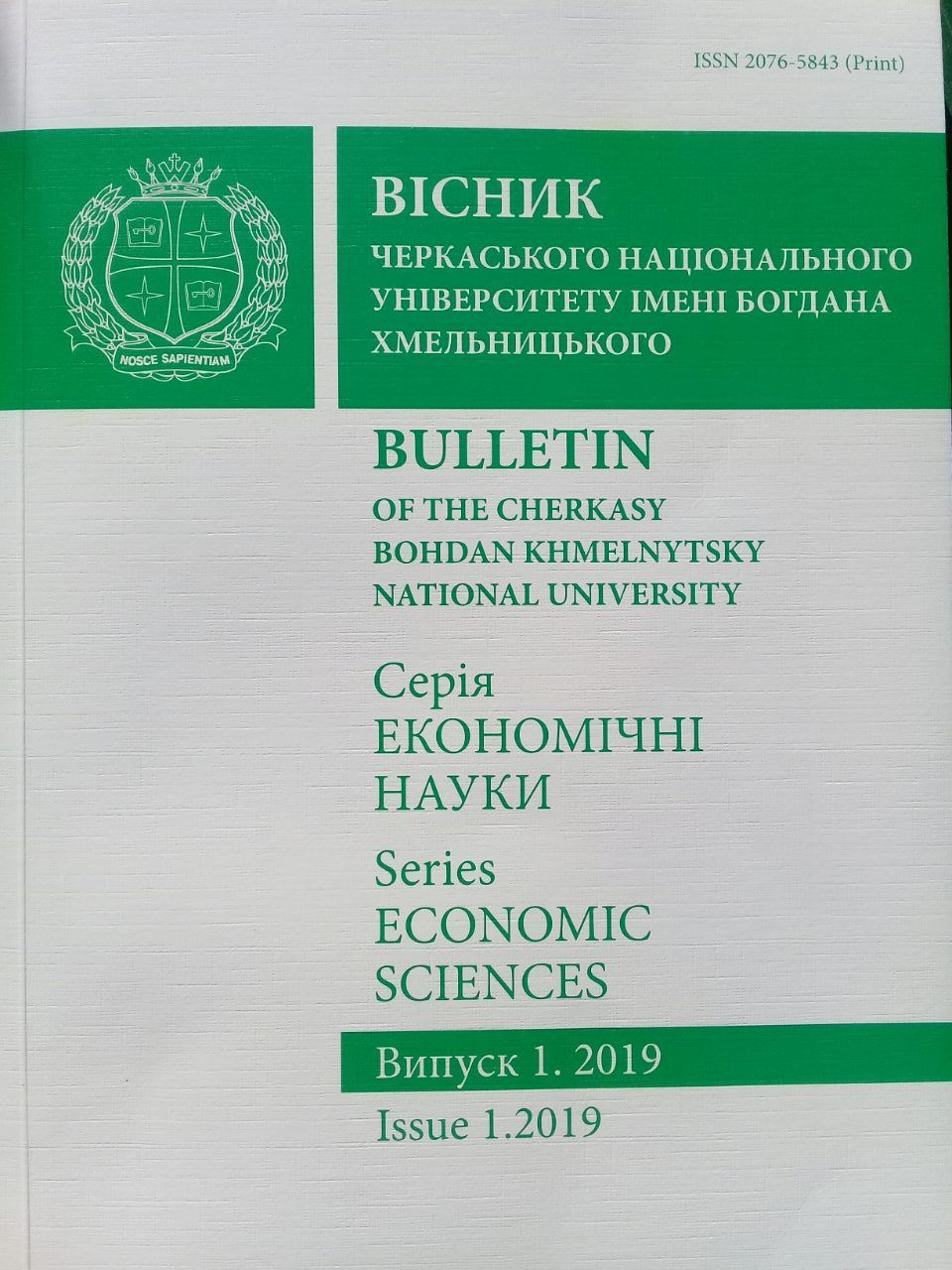INTERACTION OF THE REAL SECTOR OF THE ECONOMY AND CREDIT SPHERE: FINANCIAL IMPACT
##plugins.themes.bootstrap3.article.main##
Анотація
Introduction. The article discusses the relationship of the real economy and the credit sector. An attempt has been made to assess the financial consequences of the over-indebtedness of business entities and its impact on the state of the banking sector of the Republic of Belarus.
Purpose. Based on a study of theoretical and applied aspects of the relationship between the real and financial sectors, to assess the impact of bank lending on the state and development of the economy of the Republic of Belarus and the financial consequences of the borrowing of business entities.
Results. It has been established that there is a contradiction between the sectors, which is reflected in the fact that with the improved financial results of economic entities, there is an increase in credit risk in the banking sector, which is caused by many factors, including key lending and refinancing of loans. It was concluded that the growth is not due to the effective use of credit resources, but to excessive government intervention in the regulation of credit processes.
Originality. It has been established that there is a contradiction between sectors, which is manifested in the fact that with the improving financial performance of business entities, there is an increase in credit risk in the banking sector, which is due to many factors, among which a key role is played by directed lending and refinancing of loans. It is concluded that the growth is caused not by the efficient use of credit resources, but by excessive government intervention in the regulation of credit processes.
Conclusion. Studying the relationship between the real sector of the economy and the credit market, it was found that they are in contradiction, which is expressed in the fact that with the growth of financial results in the first, credit risk in the banking sector increases. This is due to excessive government interference in lending processes through direct lending, refinancing of loans, and the fact that the regulator recommends issuing loans to insolvent state enterprises. Excessive borrowing of the non-financial sector of the Belarusian economy, associated with the constant refinancing of credit debts, cannot be considered in the long term as a means of solving the problem of maintaining sustainable growth and can aggravate the situation not only in this sector, but also in the banking sector, which is the main supplier of financial resources.
##plugins.themes.bootstrap3.article.details##
Автори, які публікуються у цьому журналі, погоджуються з такими умовами:
1. Автори залишають за собою право на авторство своєї роботи та передають журналу право першої публікації цієї роботи на умовах ліцензії Creative Commons Attribution License, котра дозволяє іншим особам вільно розповсюджувати опубліковану роботу з обов'язковим посиланням на авторів оригінальної роботи та першу публікацію роботи у цьому журналі.
2. Автори мають право укладати самостійні додаткові угоди щодо неексклюзивного розповсюдження роботи у тому вигляді, в якому вона була опублікована цим журналом (наприклад, розміщувати роботу в електронному сховищі установи або публікувати у складі монографії), за умови збереження посилання на першу публікацію роботи у цьому журналі.
3. Політика журналу дозволяє і заохочує розміщення авторами в мережі Інтернет (наприклад, у сховищах установ або на особистих веб-сайтах) рукопису роботи, як до подання цього рукопису до редакції, так і під час його редакційного опрацювання, оскільки це сприяє виникненню продуктивної наукової дискусії та позитивно позначається на оперативності та динаміці цитування опублікованої роботи.
УГОДА
ПРО ПЕРЕДАЧУ АВТОРСЬКИХ ПРАВ
Я, автор статті/Ми, автори рукопису статті _______________________________________________________________________
у випадку її прийняття до опублікування передаємо засновникам та редколегії наукового видання «Вісник Черкаського національного університету імені Богдана Хмельницького. Серія «Економічні науки» такі права:
1. Публікацію цієї статті українською (англійською, російською, польською) мовою та розповсюдження її друкованої версії.
2. Розповсюдження електронної версії статті через будь-які електронні засоби (розміщення на офіційному web-сайті журналу, в електронних базах даних, репозитаріях, тощо).
При цьому зберігаємо за собою право без узгодження з редколегією та засновниками:
1. Використовувати матеріали статті повністю або частково з освітньою метою.
2. Використовувати матеріали статті повністю або частково для написання власних дисертацій.
3. Використовувати матеріали статті для підготовки тез, доповідей конференцій, а також усних презентацій.
4. Розміщувати електронні копії статті (зокрема кінцеву електронну версію, завантажену з офіційного web-сайту журналу) на:
a. персональних web-pecypcax усіх авторів (web-сайти, web-сторінки, блоги, тощо);
b. web-pecypcax установ, де працюють автори (включно з електронними інституційними репозитаріями);
с. некомерційних web-pecypcax відкритого доступу (наприклад, arXiv.org).
Цією угодою ми також засвідчуємо, що поданий рукопис відповідає таким критеріям:
1. Не містить закликів до насильства, розпалювання расової чи етнічної ворожнечі, які викликають занепокоєння, є загрозливими, ганебними, наклепницькими, жорстокими, непристойними, вульгарними тощо.
2. Не порушує авторських прав та права інтелектуальної власності інших осіб або організацій; містить всі передбачені чинним законодавством про авторське право посилання на цитованих авторів та / або видання, а також використовувані в статті результати і факти, отримані іншими авторами чи організаціями.
3. Не був опублікований раніше в інших видавництвах та не був поданий до публікації в інші видання.
4. Не включає матеріали, що не підлягають опублікуванню у відкритій пресі, згідно з чинним законодавством.
____________________ ___________________
підпис П.І.Б. автора
"___"__________ 20__ р.
Посилання
Karachentseva, T.I. Credit support for the real sector of the economy. Access mode: http://www.bseu.by/russian/scientific/herald/ - Access date: 04/11/2019 (in Russian).
Vlasenko, M. About the main indicators of the debt burden on the economy. Access mode: https://mail.rambler.ru/ - Access date: 03/10/2019 (in Russian).
Analytical review “Financial stability in the Republic of Belarus 2017”. Access mode: https://www.nbrb.by./ - Access date: 02/28/2019 (in Russian).
Authorities plan to abandon policy lending in 2020. Access mode: https://news.tut.by/economics - Access date: 05/20/2019 (in Russian).
Directive lending at the end of the year should be less than 1% of GDP. Access mode: https://www.belta.by/economics./ - Access date: 05/23/2019 (in Russian).

